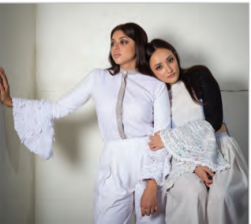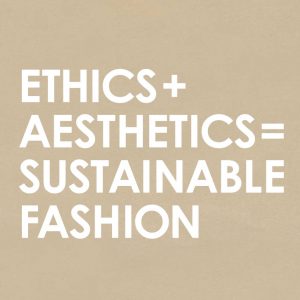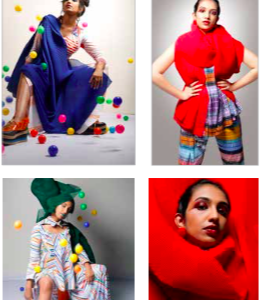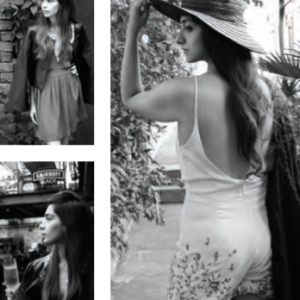Whether you’re interested in fashion magazines or coming up with new designs for garments, all fashion designers have to start from the same point. A strong base that includes design comprehension and a keen eye for art is required for anyone to succeed in the fashion business.
Fashion designers work in several capacities according to their experience, reputation, and competencies. Fashion houses, big retail chains, or independent boutiques, the sky for exploration of talent in the field of fashion knows no limit.
The duties and responsibilities of a fashion designer may vary according to their employer and position in the workplace, however, some of the common duties that designers’ share no matter what their place of work might be are:
- Sketching and Ideating initial designs
- Selecting fabrics according to the requirement
- Working with advanced CAD (computer-aided design) software
- Creating mood boards and prototypes for inspiration
- Overlooking the garment production process
- Quality control
- Client Correspondence
- Financial responsibilities such as planning of project budgets
- Administration of events
- Showcasing completed work
- Portfolio Development
- Extensive marketing
- Public Relations
What qualifications are required to be a fashion designer?
Many fashion designers have a Bachelor’s degree in a related field such as fashion design or fashion merchandising. A Bachelor’s degree often forms the base and produces creative applicants with practical knowledge on not only designing but the entire process of production of a garment, accessories, or even footwear.
-
Educational Qualifications:
Proper education and training are of the essence to the fashion industry. Most fashion designers hold a Bachelor’s degree in fashion design or fashion merchandising. During these programs, students learn about fabrics and textiles and gain an understanding of computer-aided design (Also known as CAD) technology. They work in the field and gain tremendous practical knowledge by working on projects that they can then add to their portfolio and in turn use to showcase their designs.

Developing a portfolio is the basic requirement for being a fashion designer. Students of fashion design have a plethora of opportunities to develop their portfolios further if they wish to, by entering design contests or competitions. When an employer is looking to hire a fashion designer, they tend to check these portfolios to gauge how talented or creative their potential employee is.
-
Other Experience:
Fashion designers often start their careers with the help of internships or working part-time jobs as assistants before they move on to become independent fashion designers.
Internships help students build on the practical knowledge of how the industry functions and comprehension of textiles, textures, and colors.
What are the skills required to be a fashion designer?
Every individual’s talents and skills may differ. As a fashion designer, an individual needs to have the skills stated below to gain success in the industry:
-
Creativity and an eye for art
Perhaps the most important skill for any fashion designer is an interest in art and creativity. Fashion designers are, in a sense, artists. They want their art to be different, unique, and recognizable. Many current fashion designers were architects, graphic designers, painters, etc. before they switched to the fashion industry.
Artistic skills are to a certain extent, considered as a natural ability however, these skills can be improved with the help of daily practice and professional help.
-
Communication skills:
A good fashion designer needs to have professional communication skills to lead or be a part of any team. Fashion designing is teamwork for the most part and when working with teams it is important to be able to communicate your ideas, research, or feelings to your teammates so they can help you execute these ideas. Listening also plays a huge role in communication skills as working collaboratively will require you to listen to feedback to help your designs evolve.
-
Sewing/ Drawing:
Sewing is one skill that forms the base of fashion design. Even though complete mastery may not be required, it may help for a budding designer to have close knowledge of the kind of craft used to turn their designs into a reality. Knowing the different fabrics and the work that goes behind each design will help you do your job better.

-
An Understanding of Fabrics and Materials:
The process of construction of different fabrics is shown on many sites online or in technical classes. These classes or sites will teach one about the fabrics used in the making of garments, the kinds of stitches employed, and even about experimentation with embroidery. Touch and feel fabrics that you wish to work with, understand their movement and how it drapes around the human body, these skills are of significance in the field of fashion design.

5 Steps to Become a Fashion Designer
While the process of becoming a fashion designer seem like a complicated one, it can be divided into 5 simple steps:
Step 1. Complete a Degree Program
The very first step you can take towards your dream of becoming a fashion designer is to get the right education for it. Hone your skills with a degree program. An Associate’s or Bachelor’s degree in fashion design with courses such as the history of fashion, figure drawing, computer-aided fashion design, and pattern making will help you form a strong base for your career in the field of fashion design.
Step 2. Gain Practical Experience
On-ground work is very different from that done on paper. To sharpen the skills you have gained with the right education, practice is required outside the classroom. This will help you better understand the entire process that goes behind the finished product, i.e. a garment.
Step 3. Learn the Business of Fashion
A creative flair is indeed required to succeed in the fashion industry but it is also known that creativity is required to keep a company running successfully. In addition to being creative, students must also have an understanding of finance, sales, and marketing, especially those young aspirants that wish to have their own business in fashion someday.
Step 4. Build Your Portfolio
A portfolio is what defines your work and gives you a chance to showcase your talent to a potential employer. It also consists of demonstrations of your creative ability and skills. Right from their first assignment during a degree program, students must work hard to add to their portfolio.
Step 5. Stay Updated
The trends in the fashion industry change very often and if you wish to be a successful fashion designer, you must keep up with them. Regular subscriptions to journals and fashion magazines can help you do this.
Fashion design, as a field, requires specific qualifications in today’s world. It is crucial to gain an understanding of the industry and the ‘how’ of fashion design, before pursuing a career.
How can ISDI help:
Kickstart your career in fashion designing and get formal training and education at ISDI School of Design & Innovation.
ISDI offers various design programs such as Fashion Design, Fashion Communication and Styling, Interior Design and Strategic Design, Communication Design, Product Design, and Management. Pursuing one of the degree programs, that is, Bachelors in Design (BDes) – 4 year program or Postgraduate In Design (PGDI) – 11 months program. Either of the programs are an alternative for a career in fashion and design.
The ISDI campus is located in the business district of Mumbai, the commercial center of India. ISDI consists of a curriculum that is based on that of the Parsons School of Design, experienced and industry-leading faculty, practical project-based training, all situated in a state-of-the-art campus. ISDI is just the right place for someone looking to start a career in fashion design.










